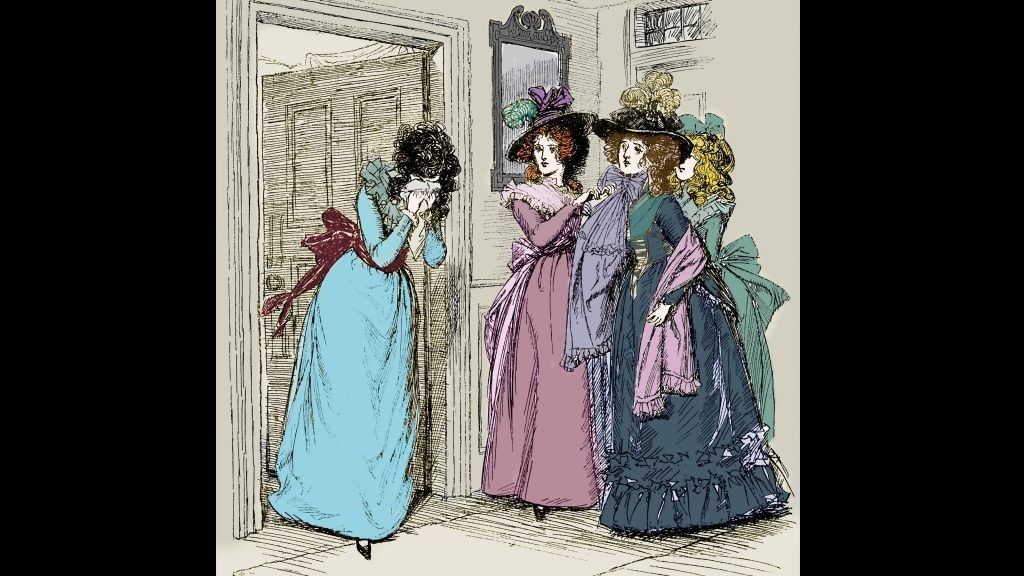Jane Austen, a literary titan of the Regency era, continues to captivate readers with her insightful social commentary, witty prose, and enduring romantic narratives. This guide explores each of Austen’s novels, offering insights into their plots, historical context, and lasting impact.
Sense and Sensibility (1811)
Sense and Sensibility introduces the Dashwood sisters, Elinor and Marianne, whose contrasting approaches to love and life drive the narrative. Marianne embraces passion and emotion, while Elinor prioritizes reason and social propriety.
Key Aspects: Austen’s debut novel, published anonymously “By a Lady,” established her as a significant voice in English literature. The novel explores the tension between emotional expression and societal expectations, a theme prevalent throughout Austen’s work. The success of Sense and Sensibility paved the way for her subsequent publications. The novel also examines the financial vulnerabilities of women in the Regency era.
Sisterly Bonds: Many have speculated whether Austen’s bond with her sister Cassandra mirrored Elinor and Marianne’s dynamic. While concrete evidence is scarce, James Austen’s poem suggests Jane possessed qualities of both sisters, embodying a blend of “sense and sensibility.”
Pride and Prejudice (1813)
Pride and Prejudice, arguably Austen’s most beloved novel, centers on Elizabeth Bennet and Fitzwilliam Darcy. Their initial animosity, fueled by societal expectations and personal misunderstandings, gradually transforms into a profound and enduring love.
Key Aspects: Originally drafted as First Impressions, the novel underwent significant revisions before publication. Elizabeth Bennet, known for her wit and independence, is considered by many to be Austen’s favorite heroine, as indicated in a letter to Cassandra.
Adaptations: Pride and Prejudice has been adapted numerous times for film and television, with the 1995 BBC adaptation starring Colin Firth and Jennifer Ehle remaining a definitive portrayal of the story. The story also highlights the limited career options for women during this period.
Mansfield Park (1814)
Mansfield Park follows Fanny Price, a young girl who is taken in by her wealthy relatives at Mansfield Park. The novel explores themes of social mobility, moral integrity, and the complexities of family relationships.
Key Aspects: Austen began writing Mansfield Park in the same year that Sense and Sensibility was published. This novel delves into the rigid social hierarchy of the time and its impact on individuals.
Real-Life Inspiration: While Austen generally avoided basing characters directly on real people, the topaz crosses purchased by her naval brothers, Charles and Francis, for Jane and Cassandra find a parallel in Mansfield Park, where William buys Fanny an amber cross. This provides a glimpse into Austen’s personal life influencing her fiction. It also showcases the importance of family connections.
Emma (1816)
Emma tells the story of Emma Woodhouse, a well-intentioned but misguided young woman who enjoys meddling in the lives of others. Her attempts at matchmaking lead to comedic misunderstandings and personal growth.
Key Aspects: Emma was the last novel published during Austen’s lifetime. Austen herself famously predicted that Emma would be “a heroine whom no one but myself will much like.” The novel provides a nuanced exploration of social class and the limitations placed upon women.
Royal Dedication: Emma was dedicated to the Prince Regent George Augustus Frederick, a gesture that Austen is believed to have undertaken reluctantly. The dedication, perceived by some as “an anti-dedication,” reflects Austen’s complex relationship with the monarchy.
Northanger Abbey and Persuasion (1818)
Published posthumously, Northanger Abbey and Persuasion offer distinct perspectives on love and society. Northanger Abbey is a coming-of-age story that satirizes Gothic novels, while Persuasion explores themes of second chances and the enduring power of love.
Key Aspects: These two novels, published together after Austen’s death, solidify her legacy as a literary innovator. Northanger Abbey showcases Austen’s wit and her ability to blend social commentary with engaging storytelling. Persuasion offers a more mature and introspective exploration of love and regret. The novels demonstrate Austen’s command of different literary styles.
Posthumous Publication: There is strong indication that Austen wanted both books published, after she died her family carried out that wish for her.
Sanditon (1817)
Sanditon, Austen’s unfinished novel, offers a glimpse into a burgeoning seaside resort and the diverse characters who inhabit it. The fragment showcases Austen’s sharp social observations and her ability to create compelling characters.
Key Aspects: Written during the last year of Austen’s life, Sanditon reflects her declining health and her keen awareness of societal trends. The novel’s focus on health and wellness is particularly notable, given Austen’s own struggles with illness.
Humor Amidst Hardship: Despite her deteriorating health, Austen maintained her sharp wit and satirical edge, evident in her portrayal of characters who exaggerate their ailments for attention and sympathy. This showcases her enduring ability to find humor in the face of adversity.
Jane Austen’s Enduring Legacy
Jane Austen’s novels continue to resonate with readers worldwide due to their timeless themes, engaging characters, and insightful social commentary. Her works offer a window into the Regency era while exploring universal human experiences of love, loss, ambition, and societal expectations. Austen’s legacy as a literary giant is secure, and her novels remain essential reading for anyone interested in English literature and social history. Her books offer valuable lessons and a fascinating look into the past.
